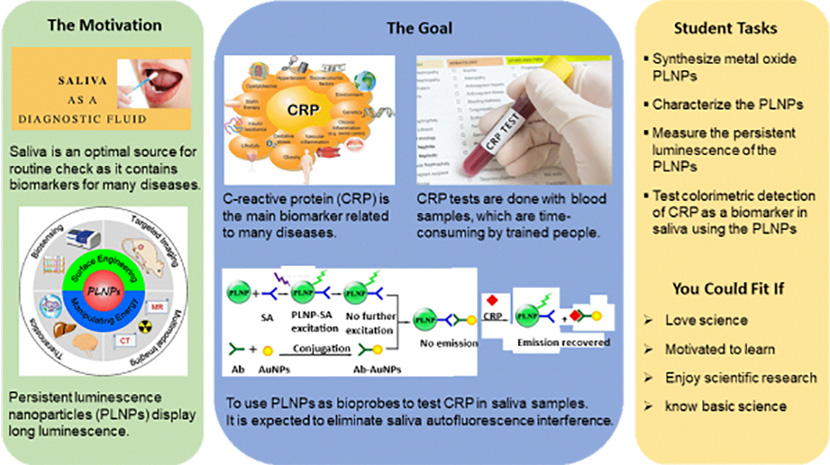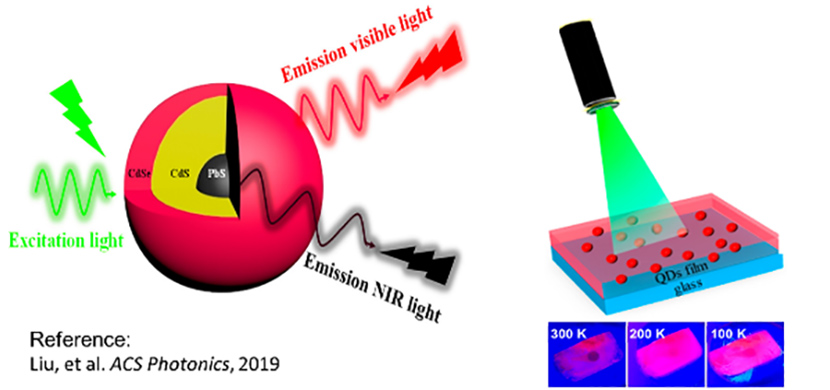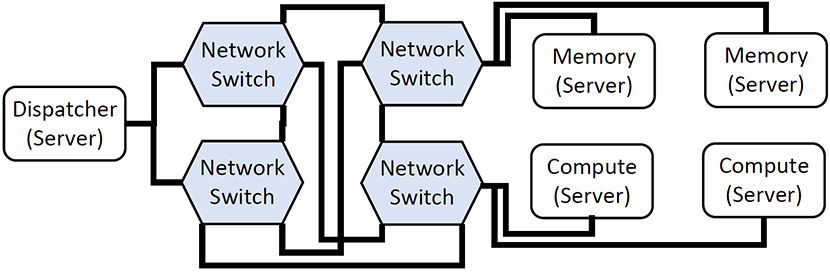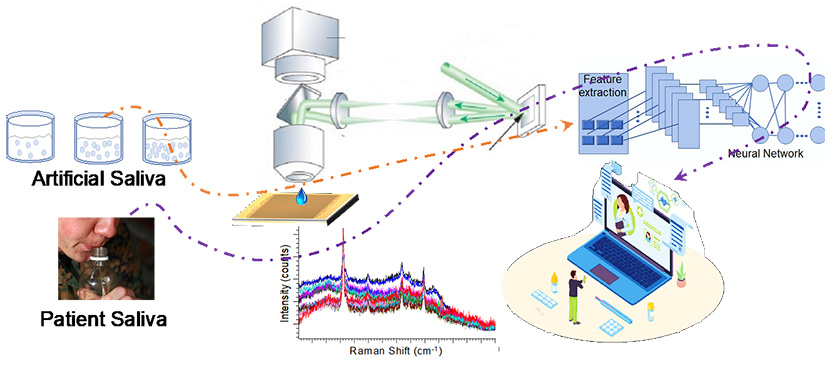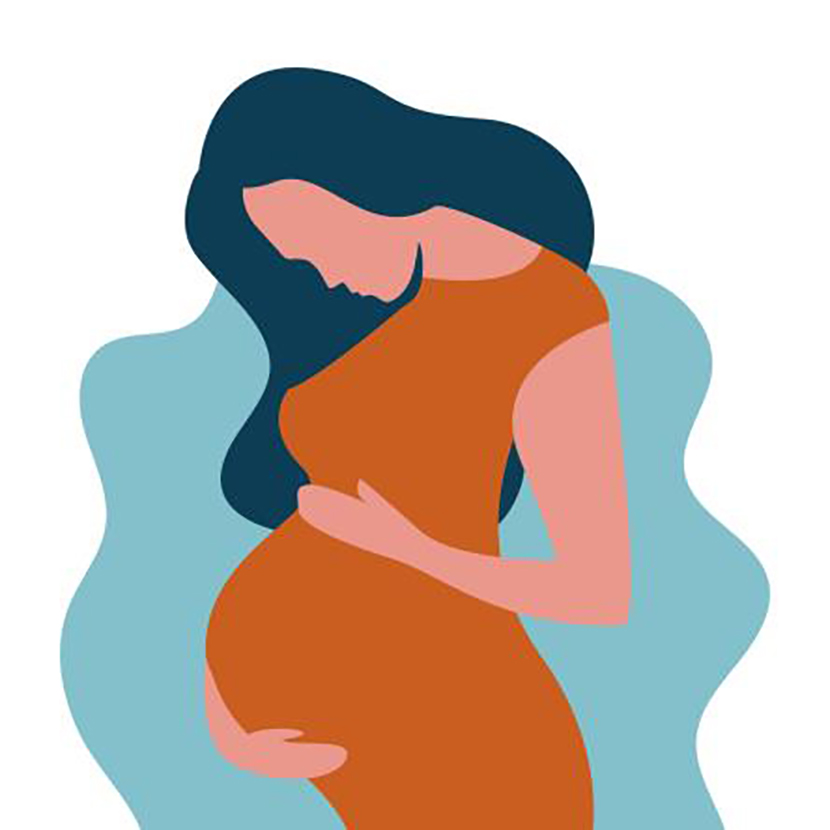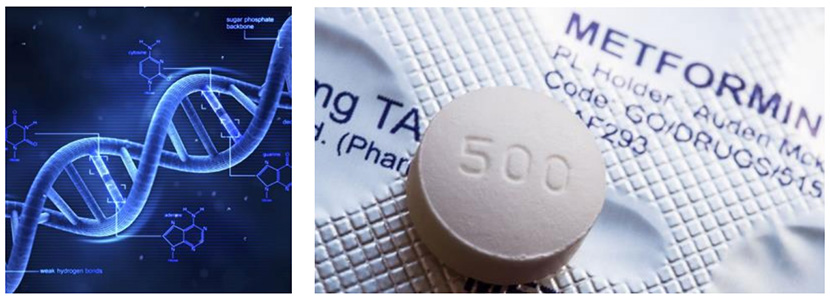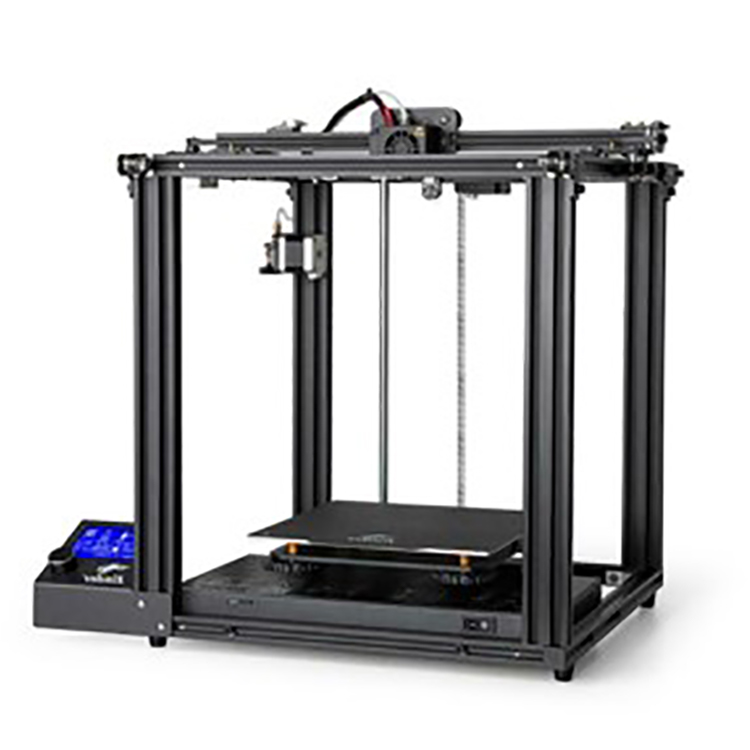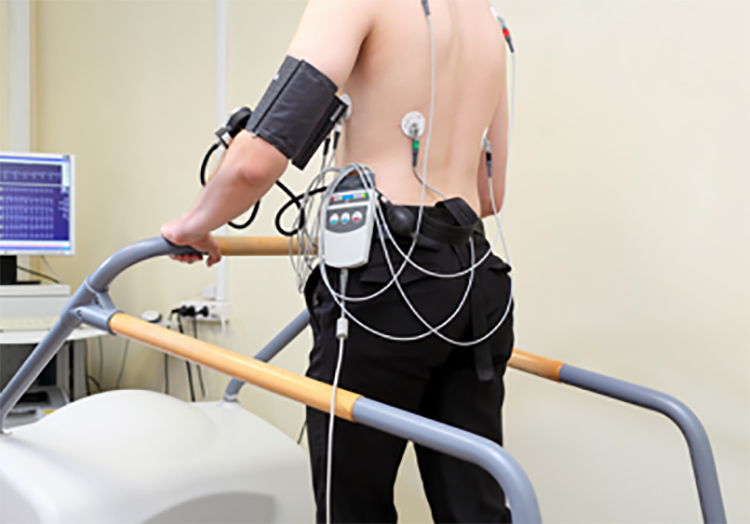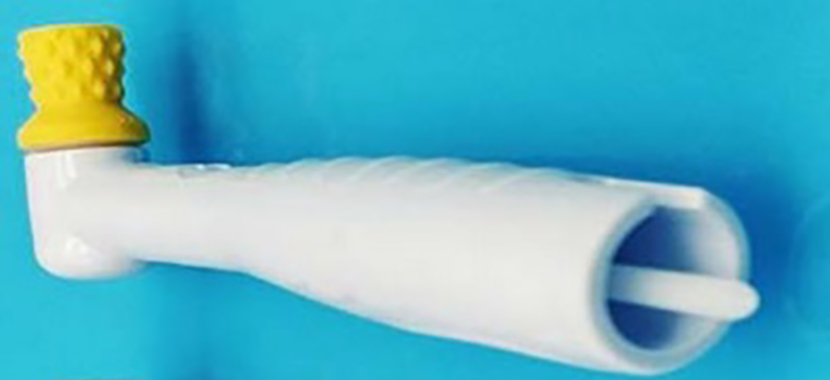To participate in RES-MATCH, students request a recommendation from faculty to work on faculty research projects. Explore a sample of past research projects students could select from along with RES-MATCH Expo faculty videos.
Colorimetric Detection of Biomarkers in Saliva Using Luminescence Nanoparticles
Video:
Professor: Yuanbing Mao (ymao17@illinoistech.edu)
Department: Chemistry
Brief description: Persistent luminescence nanoparticles (PLNPs) can remain luminescent for hours after cessation of excitation. They have emerged as important materials in biomedicine due to their special ability to eliminate tissue autofluorescence. In this study, we will explore the colorimetric detection of biomarkers in saliva using metal oxide PLNPs as bioprobes.
Specifically, we will apply metal oxide PLNPs as bioprobes to determine the concentrations of C-reactive protein (CRP) for periodontitis diagnosis. CRP is an acute-phase reactant that is found at elevated levels in the whole saliva of patients who have periodontal disease. It is also the main biomarker related to cardiovascular risk and heart attack occurrence. Since the PLNP bioprobes display long persistent luminescence, saliva autofluorescence interference can be eliminated.
It is expected that the developed PLNPs possess tunable size and desirable persistent luminescence as ideal probes for eliminating autofluorescence interference in biosensing. This work is valuable in research areas such as studying the functions of biomolecules and monitoring of molecular/cellular networks in their native contexts.
Preferred student disciplines: Chemistry, Biology, Physics, Chemical Engineering, Bioengineering
Preferred student skills: Motivated and dedicated, enjoys scientific research with basic science knowledge
Expected student outcomes: Synthesize metal oxide nanoparticles by a bottom-up method, and then confirm persistent luminescence and its change from the synthesized nanoparticles before and after interacting with CRP. The student can expect to work 8-12 hours/week.
Luminescent Nanoparticles for Ratiometric Optical Thermometer and Manometer
Video:
Professor: Yuanbing Mao (ymao17@illinoistech.edu)
Department: Chemistry
Brief description: Temperature and pressure are two of the most fundamental observables in many areas of modern science and technology, e.g., they play critical roles in many biological and biotechnological processes ranging from calcium signaling and protein folding to polymerase chain reaction and thermotherapy. However, due to insufficient contact area between the thermometer/manometer and the object/area to be measured, the precise and noninvasive measurement of local temperature and pressure with high spatial resolution at the micro- and nanoscale is still very challenging for conventional thermometers and manometers. In this study, we propose to develop highly luminescent metal oxide nanoparticles as new types of thermometers and manometers with the capability of precise temperature and pressure measurements at the micro- and nanoscale, which could provide powerful new tools in various areas of application such as nanomedicine, microfluidics, and photonics.
Preferred student disciplines: Chemistry, Biology, Physics, Chemical Engineering, Bioengineering
Preferred student skills: Motivated and dedicated, enjoys scientific research with basic science knowledge, and be able to work side-by-side with graduate students and postdocs
Expected student outcomes: Design and synthesize metal oxide nanoparticles by a bottom-up method, and then demonstrate the temperature- and pressure-dependent luminescence of the synthesized metal-oxide nanoparticles with potential thermo- and mano-metric applications in biotechnology. The student can expect to work 8-12 hours/week.
Distributed Computation for Light Propagation Modeling
Video:
Professor: Nik Sultana (nsultana1@illinoistech.edu)
Department: Computer Science
Brief description: Surgery is often the first line of treatment for patients diagnosed with solid cancer, where complete removal of the tumor(s) is not always achieved owing to challenges in detecting remaining cancer cells. It is estimated that up to 50% of patients with head and neck cancer receive incomplete surgeries because of particularly complex anatomy. To tackle this problem, our collaborators at the University Medical Center Groningen in the Netherlands have initiated the first clinical trial using cancer-targeted fluorescence agents injected into patients prior to surgery to help better identify remaining cancer in their patients so that it can be removed. To assist with these efforts, we have been developing advanced imaging strategies to help detect even the smallest amounts of cancer. Optimization of these strategies requires accurate understanding of how fluorescent light propagates through biological tissue at the margins of cancer resections. However, accurate simulations are restrictively time consuming using current methods. The goal of this project is to use cutting-edge computational methods to significantly amplify the efficiency of light propagation modeling.
In earlier work, we built a prototype to simulate photons using a single item of programmable networking hardware. The project being proposed here extends the simulation to use multiple hardware items.
Preferred student disciplines: No preferred disciplines
Preferred student skills: It's vital that the student can program in C++ to succeed in this project.
Expected student outcomes: Build a simulation that can execute on a laptop, and use widely-used open-source software such as ns3, showing a light-propagation model being executed across several nodes. The student can expect to work 4 hours/week.
Label-Free Detection of Periodontal Causative Oral Bacteria in Saliva
Video:
Professor: Rong Wang (wangr@illinoistech.edu)
Department: Chemistry
Brief description: Periodontitis is an inflammatory disorder initiated by the accumulation of oral bacteria in subgingival sites, which induce local and systemic inflammatory changes and promote the loss of attachment and alveolar bone. These clinical changes are associated with changes in the microbial composition of adherent plaque at or below the gingival margin. Since periodontitis often progresses without noticeable symptoms, patients are often unaware of their pathologic condition until the periodontal destruction progresses to the point of no return. A simple, fast and sensitive method to detect shifts in the resident microbial species in saliva is ideal to provide quick assessment. Actinobacillus actinomycetemcomitans (Aa), Porphyromonas gingivalis (Pg) and Streptococcus mutans (Sm) are among reported periodontal pathogens, which colonize in the oral cavity, invade periodontal tissues, initiate connective tissue destruction, and interfere with tissue repair. We applied surface-enhanced Raman spectroscopy (SERS) to achieve label-free detection of the oral bacteria. To achieve fast detection at high sensitivity, a large set of spectra of each species, collected in 30 s, are used for machine learning to establish the predictive models. Using these models, the accuracy of identifying pure species reaches 98%, and the accuracy of identifying mixtures is at 80%. In this project, we aim to further increase the accuracy, particularly for identifying species in mixtures, by improving the surface enhancement and detection sensitivity to achieve single cell level detection. When the detection is integrated on a microfluidic chip, it will facilitate the development of a portable salivary sensor device for convenient use in a dentist’s office or at home. The student will receive trainings in (1) Raman spectroscopy; (2) surface functionalization and characterization; (3) data analyses.
Preferred student disciplines: Chemistry, Biology, Biomedical Engineering
Preferred student skills: Passionate about research, good hands-on skills, 2+ years labs
Expected student outcomes: Collect Raman spectra of multiple periodontal pathogens under optimized conditions, and apply the predictive models to achieve improved accuracy of identification in artificial saliva. The student will work with PhD students, and is expected to work 8+ hours per week.
Silk-CNT Composite Fibers and Its Application in Mediating Fibroblast Stimulation for Tissue Regeneration
Video:
Professor: Rong Wang (wangr@illinoistech.edu)
Department: Chemistry
Brief description: Functional biopolymer scaffolds are in high demand for tissue regeneration. A biocomposite scaffold uniquely combines the chemical and physical properties of materials derived from nature and synthetic systems to achieve the functionality that uniquely meets the need. We have generated silk-CNT composite fibers by electrospinning, which are mechanically strong, electrically conductive and unidirectionally aligned. Serving as a matrix, it mediated electrical stimulation of fibroblasts extracted from patients with connective tissue disorder to achieve improved synthesis of collagen, a major component in connective tissues and critical in tissue repair. We hypothesize that a set of parameters of electrical stimulation can impact the outcome of fibroblast activation, and an electrical stimulation can impose different effects on fibroblasts harvested from different tissue types of the same patient or from different patients. In this project, we aim to examine the effect of various electrical stimulation parameters on fibroblast activation to determine the optimum conditions for boosting collagen synthesis to serve for personalized cell therapeutic treatment of connective tissue disorder. The student will receive trainings in (1) extracting and purifying silk fibroin from silk cocoons, electrospinning; (2) immunofluorescent imaging; (3) cell proliferation and viability assays; (4) data analysis.
Preferred student disciplines: Chemistry, Biology, Biomedical Engineering
Preferred student skills: Passionate about research, good hands-on skills, 2+ years labs
Expected student outcomes: Quantitatively determine the expression levels of α-smooth muscle actin, collagen type I and type III in fibroblasts activated under various electrical stimulation conditions. The student will work with a PhD student, and is expected to work 8+ hours per week.
Wearable Device for Maternal Health
Video:
Professor: Abhinav Bhushan (abhushan@illinoistech.edu)
Department: Biomedical Engineering
Brief description: There is a need for objective measurement of physiological signals that report our health. Movement within the mother’s womb is a critical measure that reports the health of the fetus. Doctors generally advise expecting moms to record kick counts; however, due to several issues(body types, sensitivity, etc.), there are differences in how these movements are sensed and recorded. The goal of this project is to design a wearable device that can objectively quantify kick counts.
Preferred student disciplines: Biomedical Engineering, Materials Science and Engineering, Electrical and Computer Engineering
Preferred student skills: None. Freshmen and Sophomores especially encouraged.
Expected student outcomes: The student will learn about physiological sensors, circuit design, prototype development, and science communication. Student work will include literature search, design of the wearable device, and selection of parts for a prototype. The student can expect to work 5-10 hours/week.
Gene Expression -> Therapeutics
Video:
Professor: Abhinav Bhushan (abhushan@illinoistech.edu)
Department: Biomedical Engineering
Brief description: There has been an uptick in the amount of gene and transcript data for different diseases. This includes transcript data on diabetes generated by our lab. There have been recent algorithms that can interpret these data to result in drug targets as well as potential drugs that can affect the important transcripts. The goal of this project is to test our data on these algorithms to discover novel treatments for diabetes.
Preferred student disciplines: Biomedical Engineering, Electrical and Computer Engineering, Computer Science, Math
Preferred student skills: Background in data science or programming
Expected student outcomes: The student will learn about biomedical data algorithms, RNA sequencing, and diabetes drugs. Student work will include implementation of one of the algorithms to identify drug targets and possibly effective drugs. The student can expect to work 5-10 hours/week.
A Novel Backache Massage Machine
Video:
Professor: Ali Khounsary (akhounsa@illinoistech.edu)
Department: Physics
Brief description: Back pain is one of the most common health problems. The causes vary, but they can be classified as injury, congenial, degenerative, and nerve / spinal cord problems. Massage therapy is one of the modalities recommended for relief and speedy recovery, but it is expensive and requires office visits. Therefore, a simple massage machine developed for home use can provide an attractive and cost effective option.
A first generation of such a massage machine has been developed, thanks to a previous RES-MATCH award and the excellent work of the awardee. The device uses motor-driven rollers that move across the back at an appropriate speed, applying pressure according to a user-specific program for spinal stimulation and mobilization. The purpose of this project is to make the necessary modifications to provide a robust fully functional prototype for home use, working with faculty and the past awardee who will continue to help with the project.
Preferred student disciplines: No preferred disciplines
Preferred student skills: Strong background in mechanical engineering and familiarity with electronics and coding
Expected student outcomes: The student will create a functioning prototype that provides a massage session with user input duration, pressure, and speed. The student can expect to work 5-10 hours/week.
A Novel Solution for Successful Cardiac Stress Test
Video:
Professor: Ali Khounsary (akhounsa@illinoistech.edu)
Department: Physics
Brief description: A cardiac stress allows an evaluation of the heart’s ability to respond to simulated external stress in a clinical environment. The stress can be induced by exercise or by intravenous pharmacological stimulation. A set of electrodes may be connected to the patient's skin to collect electrocardiogram information. Comparison of the at-rest and stressed circulatory conditions would allow evaluation of the heart muscle tissues. Often, the electrodes detach from the body during the strenuous exercise causing the loss of valuable electrocardiogram information. We would like to develop a solution to ensure these electrodes remain attached during the test.
The project will start with a review of the issue and its existing solutions. New solutions will be reviewed, including one provided by the project advisor, and one will be selected for development. A prototype will be constructed and evaluated in collaboration with one of the local hospitals with prior arrangements.
Preferred student disciplines: No preferred disciplines
Preferred student skills: Resourceful students of any discipline can apply. Familiarity with sewing and textiles is a requirement.
Expected student outcomes: The student will create a functioning prototype that keeps the electrodes secured in place during an exercise session. The student can expect to work 5-10 hours/week.
Development of a Novel Telemedical Device: the PharynxScope
Video:
Professor: Ali Khounsary (akhounsa@illinoistech.edu)
Department: Physics
Brief description: Telemedicine is the practice of providing healthcare remotely. It allows accessible and cost-effective healthcare. Inexpensive diagnostic devices that patients can use at home can help this process. This project is on the development of the PharynxScope, a device patients can use to transmit oral cavity images to their healthcare provider in real time.
A first-generation hard-wire prototype of this device (shown above) has been developed. We would like to develop a wireless version prototype. This requires the upgrading of the electronic circuitry to include wireless (Wi-Fi / BT) capabilities and the necessary coding and packaging.
Preferred student disciplines: No preferred disciplines
Preferred student skills: Strong background in electronics and coding
Expected student outcomes: The student will create a functioning prototype that transmits oral cavity images wirelessly in real time. The student can expect to work 5-10 hours/week.
Compressive Stress of 3D-Printed Lightweight Lattice Biostructure
Video:
Professor: Amir Mostafaei (mostafaei@illinoistech.edu)
Department: Mechanical, Materials, and Aerospace Engineering
Brief description: Recently, metal 3D printing of lattice biostructures has evolved noticeably to manufacture light weight implants, prostheses, functionally graded structures and hip/joints. Design freedom and custom-built part production, as well as lead time and manufacturing, are main criteria for fabrication of biostructures via 3D printing. The proposed project aims to use stainless steel 316L metal powder in a binder jetting additive manufacturing machine. The 3D printed coupons will be post processed including sintering and hot isostatistically pressed to understand post heat treatment effects to microstructure and hardness. Then, lattice structures will be binder jet 3D printed followed by consolidation process and characterized for compression strength. This research merges disciplines including materials science, advanced materials processing, and biomedical engineering.
Preferred student disciplines: Materials Science and Engineering, Biomedical Engineering
Preferred student skills: Motivated, enjoy manufacturing and characterization, know basics of materials science.
Expected student outcomes: This research aims to test the hypothesis of using a new double smoothing roller in powder bed binder jetting process that can enhance powder packing density of ultrafine metal powder and result in high green part density. This is a critical step in the sinter-based additive manufacturing process. Student work will include operating a binder jet 3D printer, feedstock and 3D printed part characterizations, and data analysis. The student can expect to work 8-12 hours/week.
Auto-dispensing Prophy
Professor: Ali Khounsary (akhounsa@illinoistech.edu)
Department: Physics
Brief description: Dental prophylaxis is a dental procedure which is performed at regular intervals to reduce risk of gum and tooth disease. The “cleaning” procedure uses many hand-held or ultrasonic instruments. One of the devices that is routinely used is the ‘prophy’ which is used to polish teeth after the cleaning.
A prophy is an all-plastic part with a small cup at one end as shown. It is attached to a hand-help device to provide rotation of the shaft and thus the cup through a gear system. Prophy paste consisting of abrasives is removed from small containers and manually placed onto the cup. The abrasive is worked onto the teeth by the rotating cup, cleaning and polishing teeth. As the abrasive is used, the dentist will load the cup again and again some 10 times during each session.
The purpose of this project is to eliminate the manual placement of the paste onto the cup by loading the paste onto the prophy for automatic delivery. This process will be faster, more hygienic, and reduces paste usage. During the past semester, significant progress was made on this project which can be built upon during this semester.
Preferred student disciplines: No preferred disciplines
Preferred student skills: Required skills include a strong background in mechanical design and CAD. Familiarity with 3D printing and fluid mechanics is helpful.
Expected student outcomes: The project involves reviewing some background information, examining several design ideas, selection and implementation of one of the designs, design and fabrication of parts, and assembly and testing of a prototype. The student can expect to work 10 hours/week.


